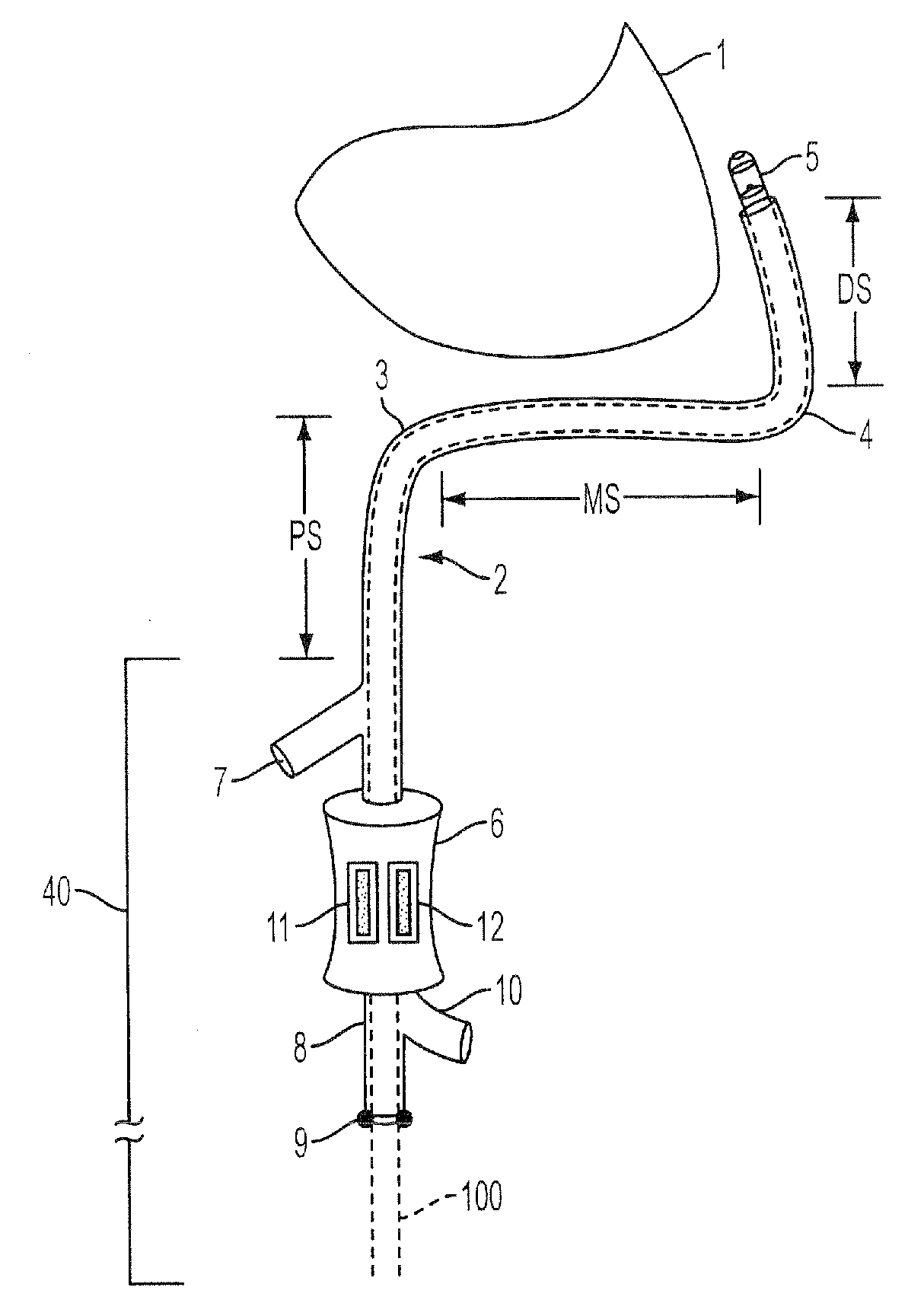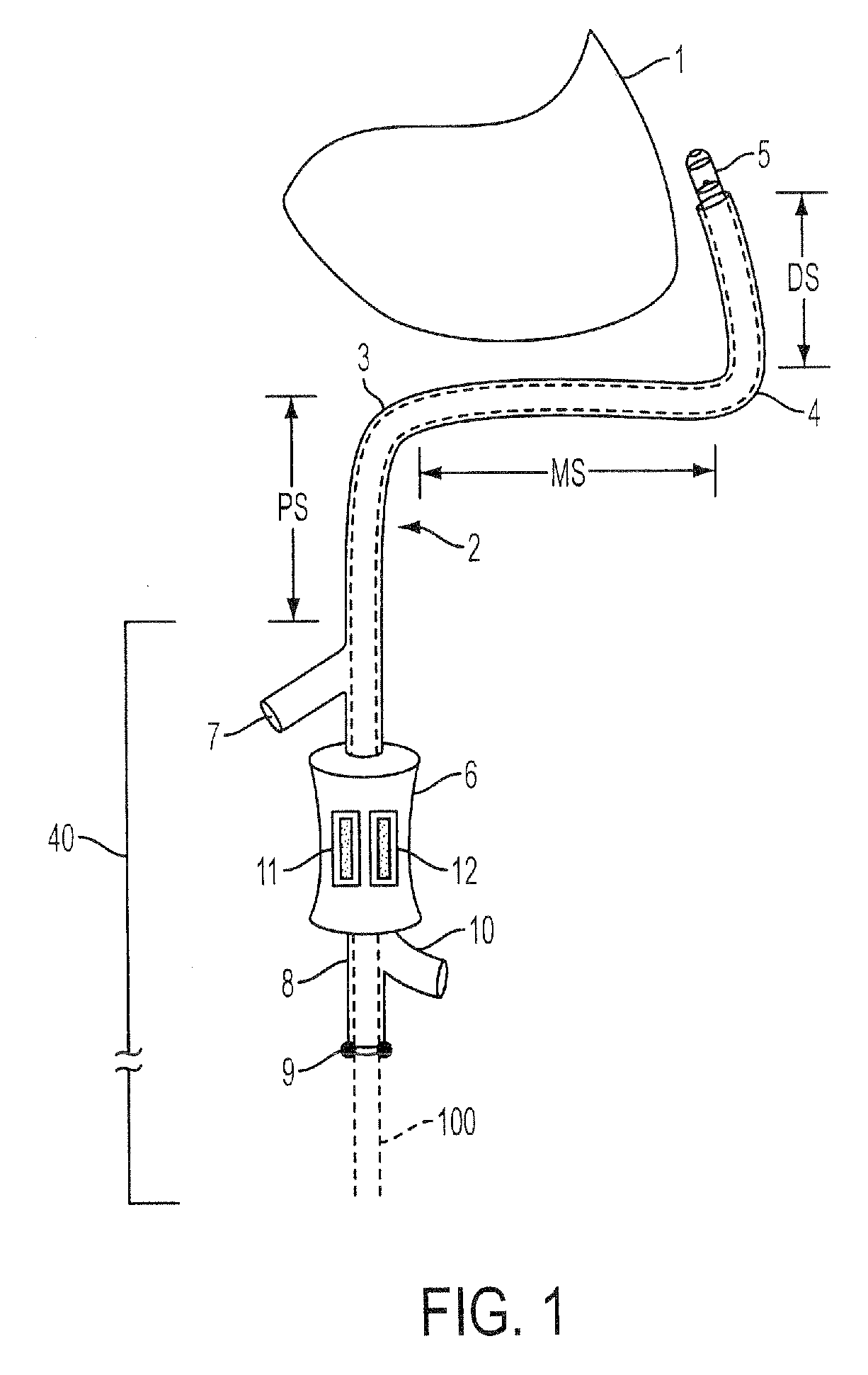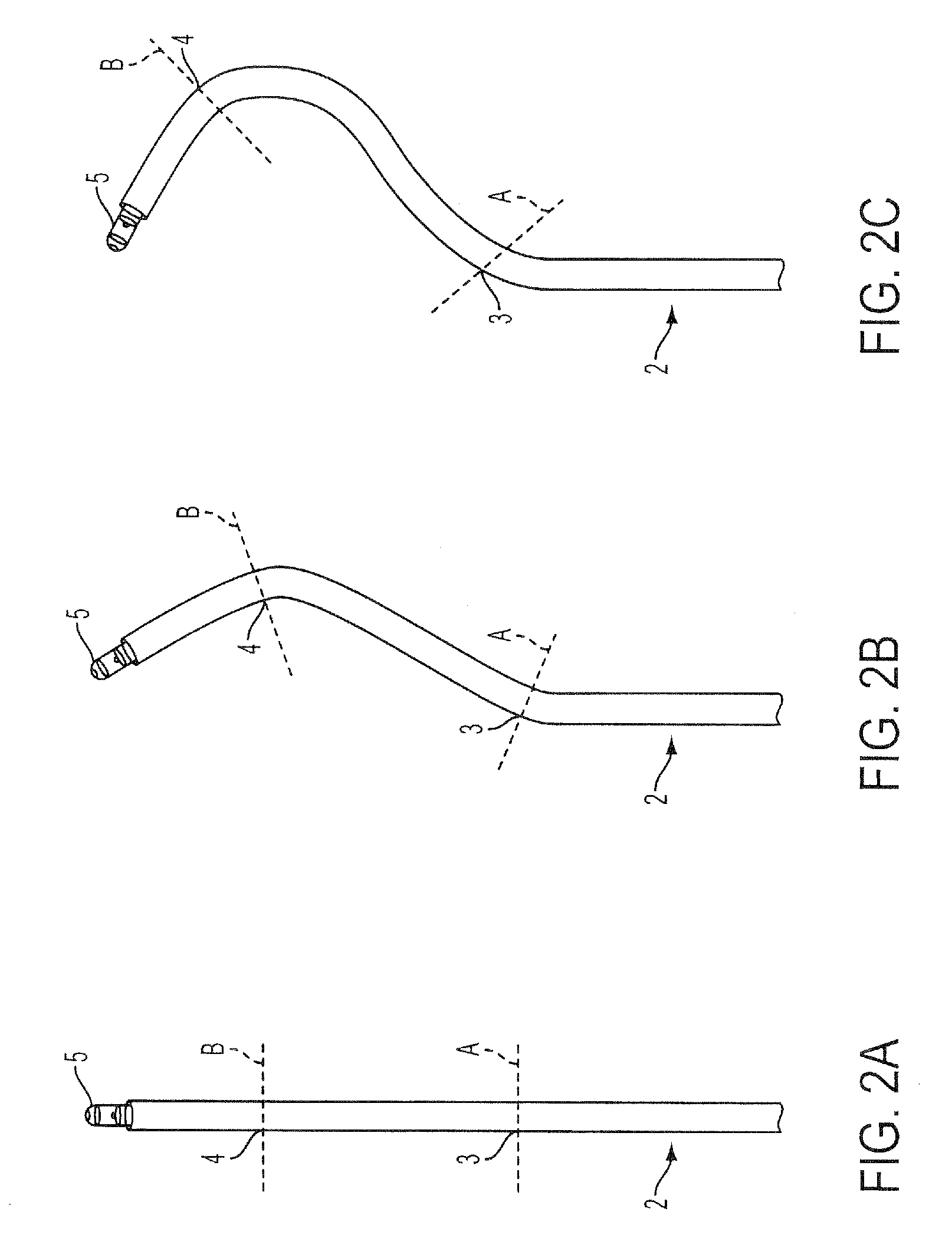Epicardial Ablation Catheter and Method of Use
a catheter and endocardial ablation technology, applied in the field of medical implants, can solve the problems of inconvenient use, injury to patients, awkwardness of conventional long catheters used in endocardial ablation, etc., and achieve the effect of preventing hemodynamic collapse and death
- Summary
- Abstract
- Description
- Claims
- Application Information
AI Technical Summary
Benefits of technology
Problems solved by technology
Method used
Image
Examples
examples
[0077]Practice of the invention will be still more fully understood from the following examples, which are presented herein for illustration only and should not be construed as limiting the invention in any way.
example no.1
Example No. 1
[0078]Summary of Dual-Deflectable Irrigated / Suction-Tip Ablation Catheter is provided below.
[0079]Some non-limiting exemplary design features of the ablation catheter are:
[0080](1) A length of 90 cm, with an 8 Fr diameter.
[0081](2) Two separate deflectable points. At rest the catheter will be straight. However the distal tip can be deflected through 120 degrees in two directions, approximately 17 mm from the tip. A second deflectable curve will be centered approximately 50 mm proximal to the tip and will be able to deflect through 120 degrees in one direction. The nominal 50 mm length could be variable to create a family of catheters, so that shorter curves would be used in small children while longer curves would be used in larger adults.
[0082](3) Irrigation on the entire end of the catheter with suction at three points just proximal to the second set of electrodes so all sides of the catheter tip are kept cool but the irrigation fluid is sucked back. In addition there...
example no.2
Example No. 2
[0089]In one embodiment, the conductor resistance for anodes and cathodes would be 0.9 Ohms (static). Irrigation would take place at 4 PSI, and suction at 3 PSI. The ablation system would provide electromagnetic shielding, with room for guidance means and / or propulsion means. The ablation catheter would be stiff enough for use in a robotic system, such as the Hansen Sensei system, with a 6.5 Fr outer size and a length of 55 cm. Various robotic systems would provide a means for navigating the ablation catheter and related components disclosed herein.
PUM
 Login to View More
Login to View More Abstract
Description
Claims
Application Information
 Login to View More
Login to View More - R&D
- Intellectual Property
- Life Sciences
- Materials
- Tech Scout
- Unparalleled Data Quality
- Higher Quality Content
- 60% Fewer Hallucinations
Browse by: Latest US Patents, China's latest patents, Technical Efficacy Thesaurus, Application Domain, Technology Topic, Popular Technical Reports.
© 2025 PatSnap. All rights reserved.Legal|Privacy policy|Modern Slavery Act Transparency Statement|Sitemap|About US| Contact US: help@patsnap.com



